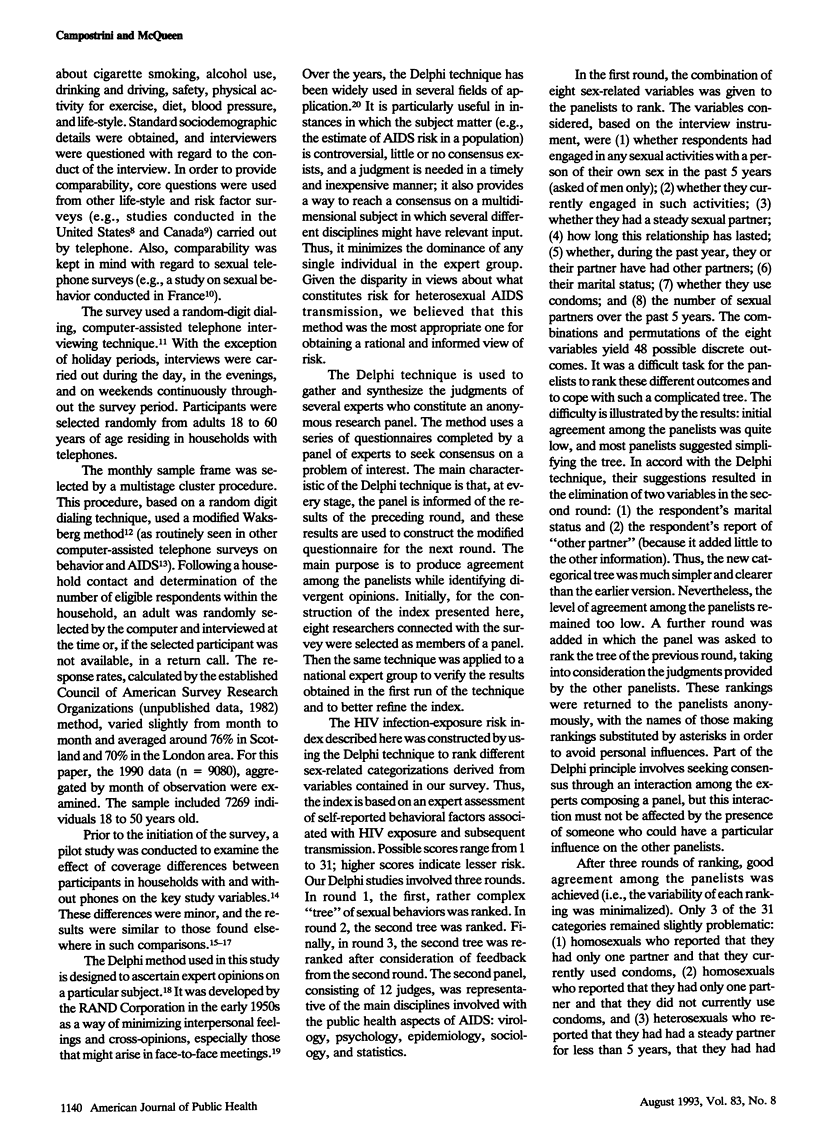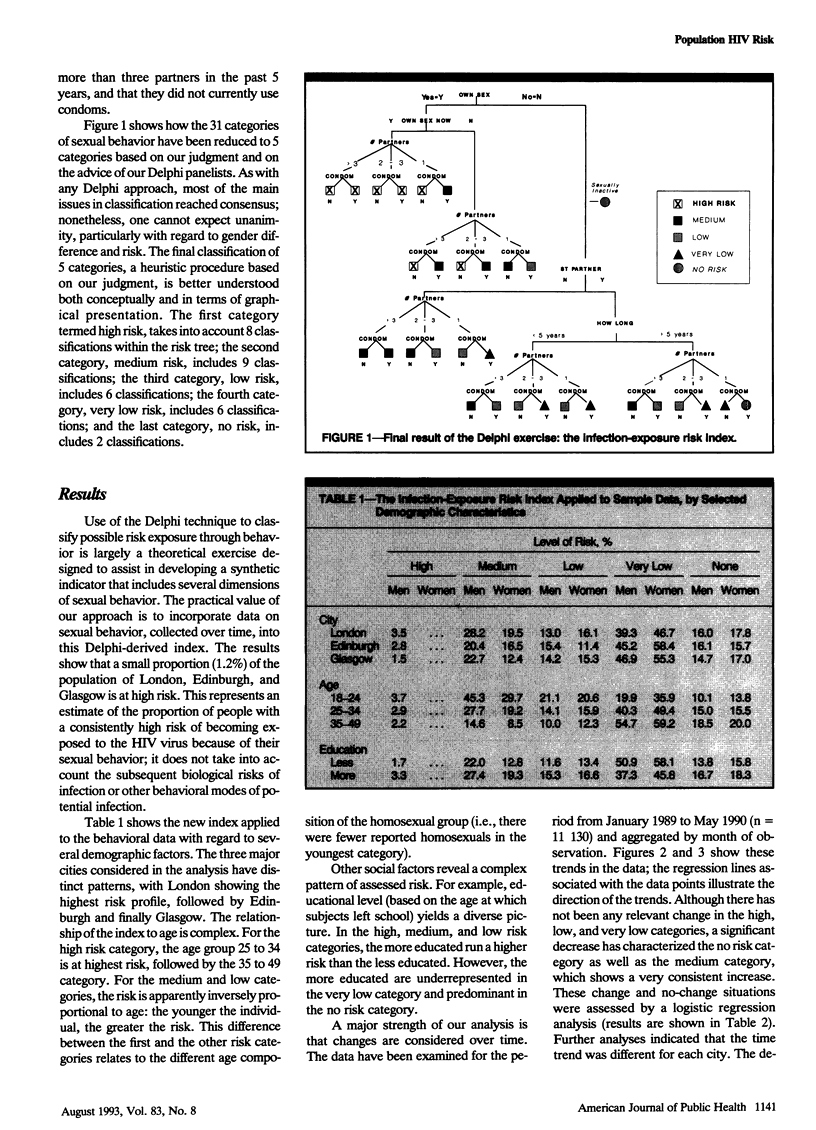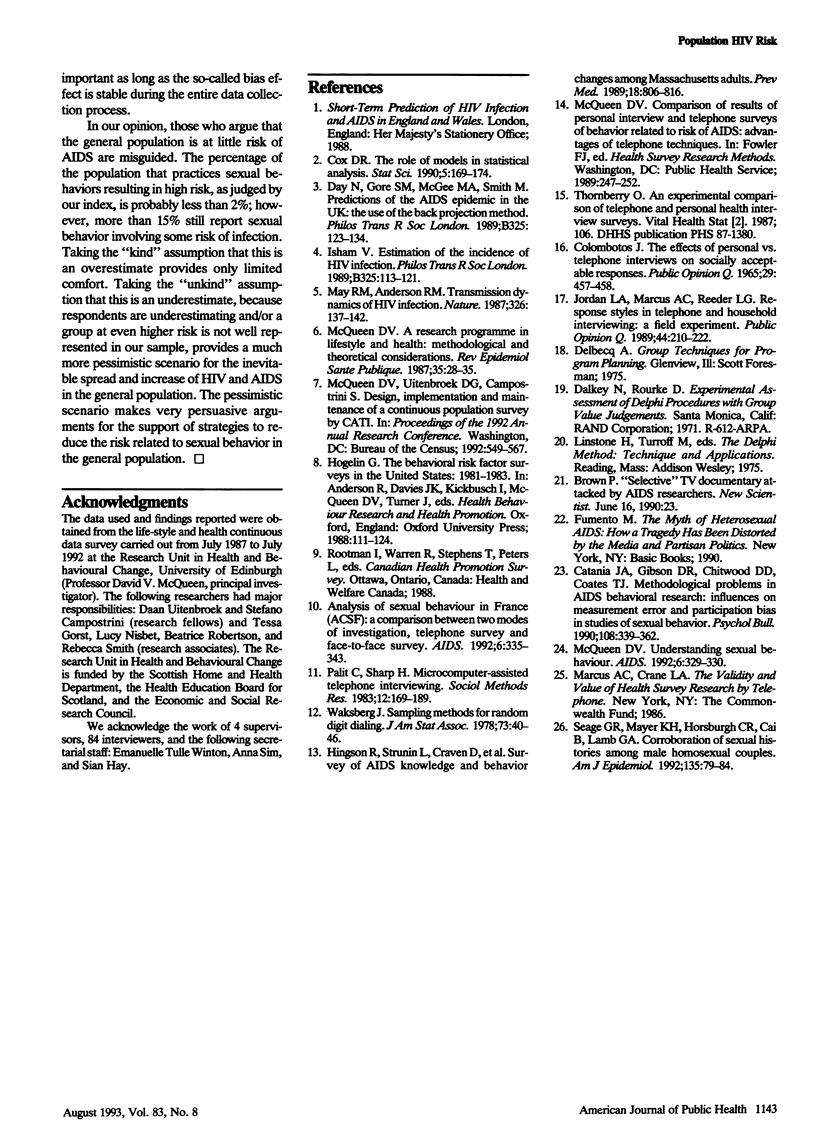Abstract
OBJECTIVES. The spread of the human immunodeficiency virus (HIV) in the general population has been a much debated topic in the mass media. The aim of this study was to create an approach to estimating the risk of exposure to HIV resulting from sexual behaviors. METHODS. A theoretical estimate was applied to data obtained from a large-scale risk factor survey carried out in Britain. An HIV infection-exposure risk index was constructed by ranking different sex-related categorizations derived from variables in the survey. RESULTS. The risk index involved a Delphi-based assessment of self-reported behavioral factors associated with HIV exposure and subsequent transmission. Roughly 85% of the adult population aged 18 to 50 were estimated to be at some risk for behavioral exposure to HIV virus with regard to reported sexual behavior. Over time, those who could be considered at no risk have declined as a proportion of the population. CONCLUSIONS. The estimates appear to refute commonplace assertions that exposure to HIV through sexual behavior is not a problem for general populations.
Full text
PDF




Selected References
These references are in PubMed. This may not be the complete list of references from this article.
- Catania J. A., Gibson D. R., Chitwood D. D., Coates T. J. Methodological problems in AIDS behavioral research: influences on measurement error and participation bias in studies of sexual behavior. Psychol Bull. 1990 Nov;108(3):339–362. doi: 10.1037/0033-2909.108.3.339. [DOI] [PubMed] [Google Scholar]
- Day N. E., Gore S. M., McGee M. A., South M. Predictions of the AIDS epidemic in the U.K.: the use of the back projection method. Philos Trans R Soc Lond B Biol Sci. 1989 Sep 5;325(1226):123–134. doi: 10.1098/rstb.1989.0077. [DOI] [PubMed] [Google Scholar]
- Hingson R., Strunin L., Craven D. E., Mofenson L., Mangione T., Berlin B., Amaro H., Lamb G. A. Survey of AIDS knowledge and behavior changes among Massachusetts adults. Prev Med. 1989 Nov;18(6):806–816. doi: 10.1016/0091-7435(89)90016-9. [DOI] [PubMed] [Google Scholar]
- Isham V. Estimation of the incidence of HIV infection. Philos Trans R Soc Lond B Biol Sci. 1989 Sep 5;325(1226):113–121. doi: 10.1098/rstb.1989.0076. [DOI] [PubMed] [Google Scholar]
- May R. M., Anderson R. M. Transmission dynamics of HIV infection. Nature. 1987 Mar 12;326(6109):137–142. doi: 10.1038/326137a0. [DOI] [PubMed] [Google Scholar]
- McQueen D. V. A research programme in lifestyle and health: methodological and theoretical considerations. Rev Epidemiol Sante Publique. 1987;35(1):28–35. [PubMed] [Google Scholar]
- McQueen D. Understanding sexual behaviour. AIDS. 1992 Mar;6(3):329–330. doi: 10.1097/00002030-199203000-00012. [DOI] [PubMed] [Google Scholar]
- Seage G. R., 3rd, Mayer K. H., Horsburgh C. R., Jr, Cai B., Lamb G. A. Corroboration of sexual histories among male homosexual couples. Am J Epidemiol. 1992 Jan 1;135(1):79–84. doi: 10.1093/oxfordjournals.aje.a116204. [DOI] [PubMed] [Google Scholar]


